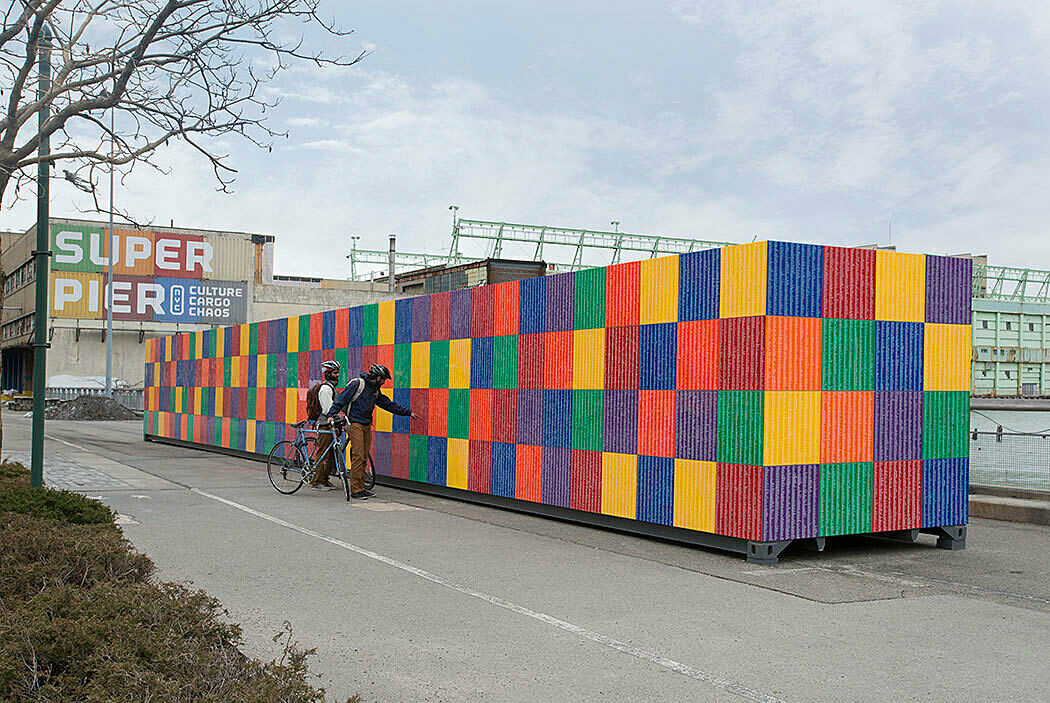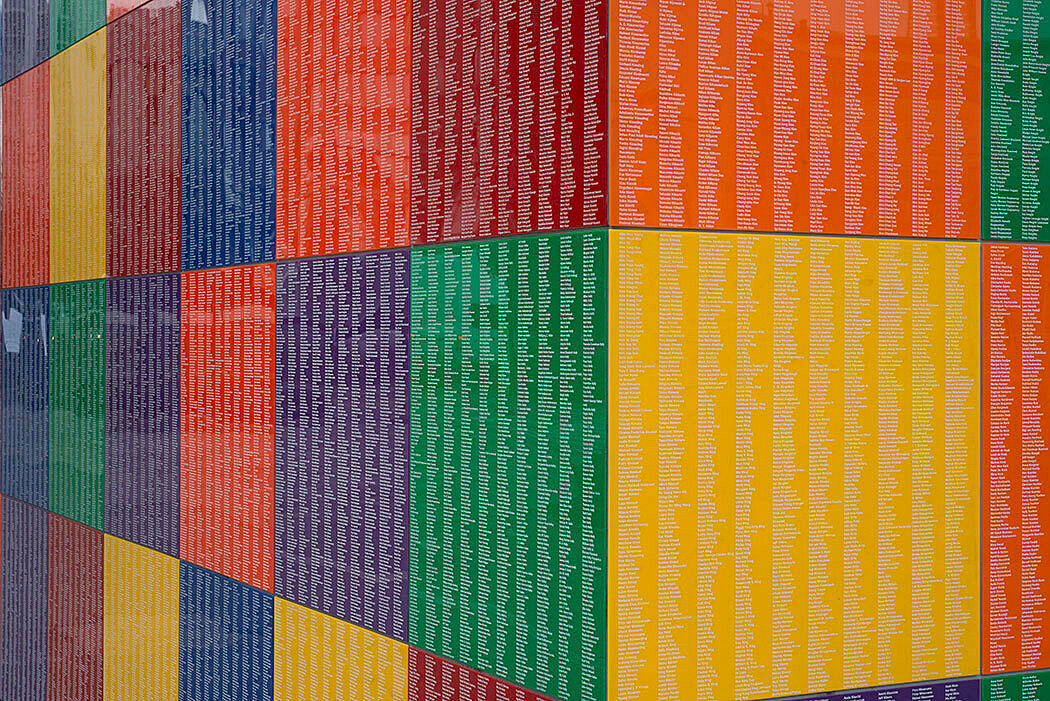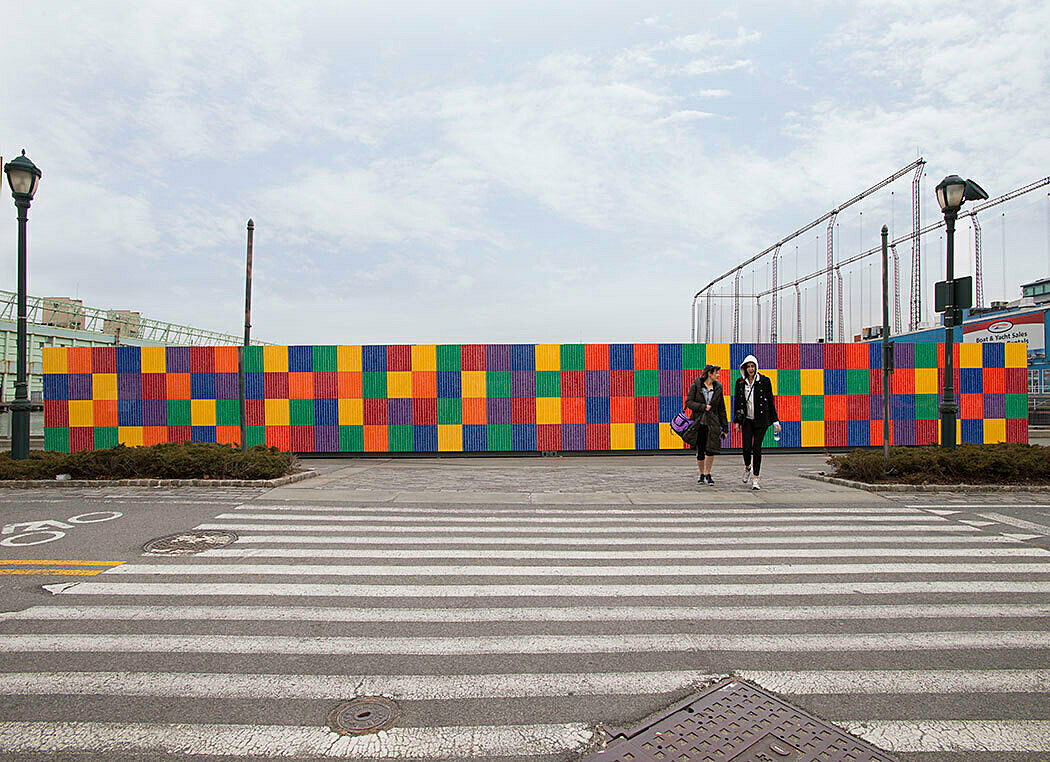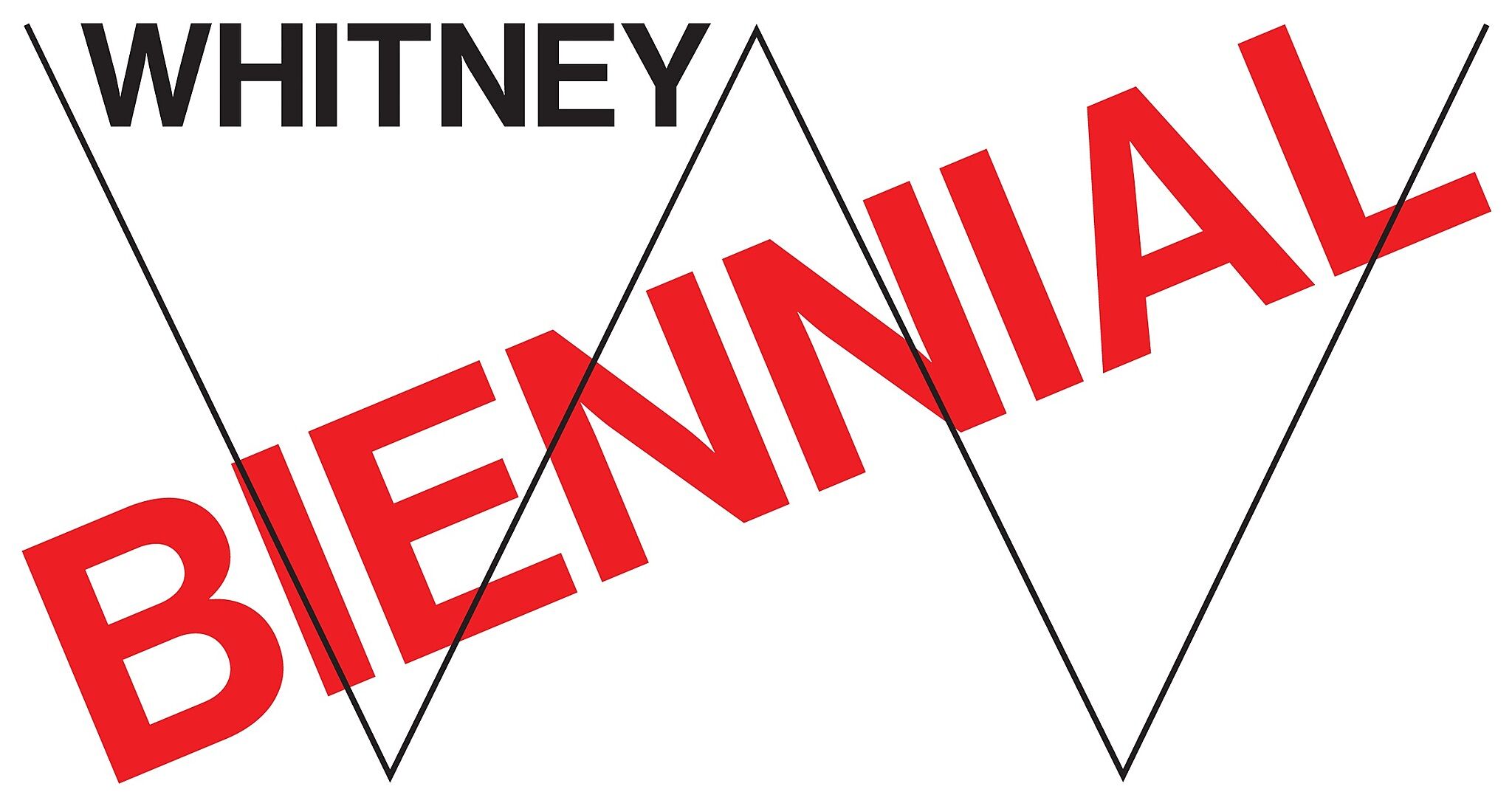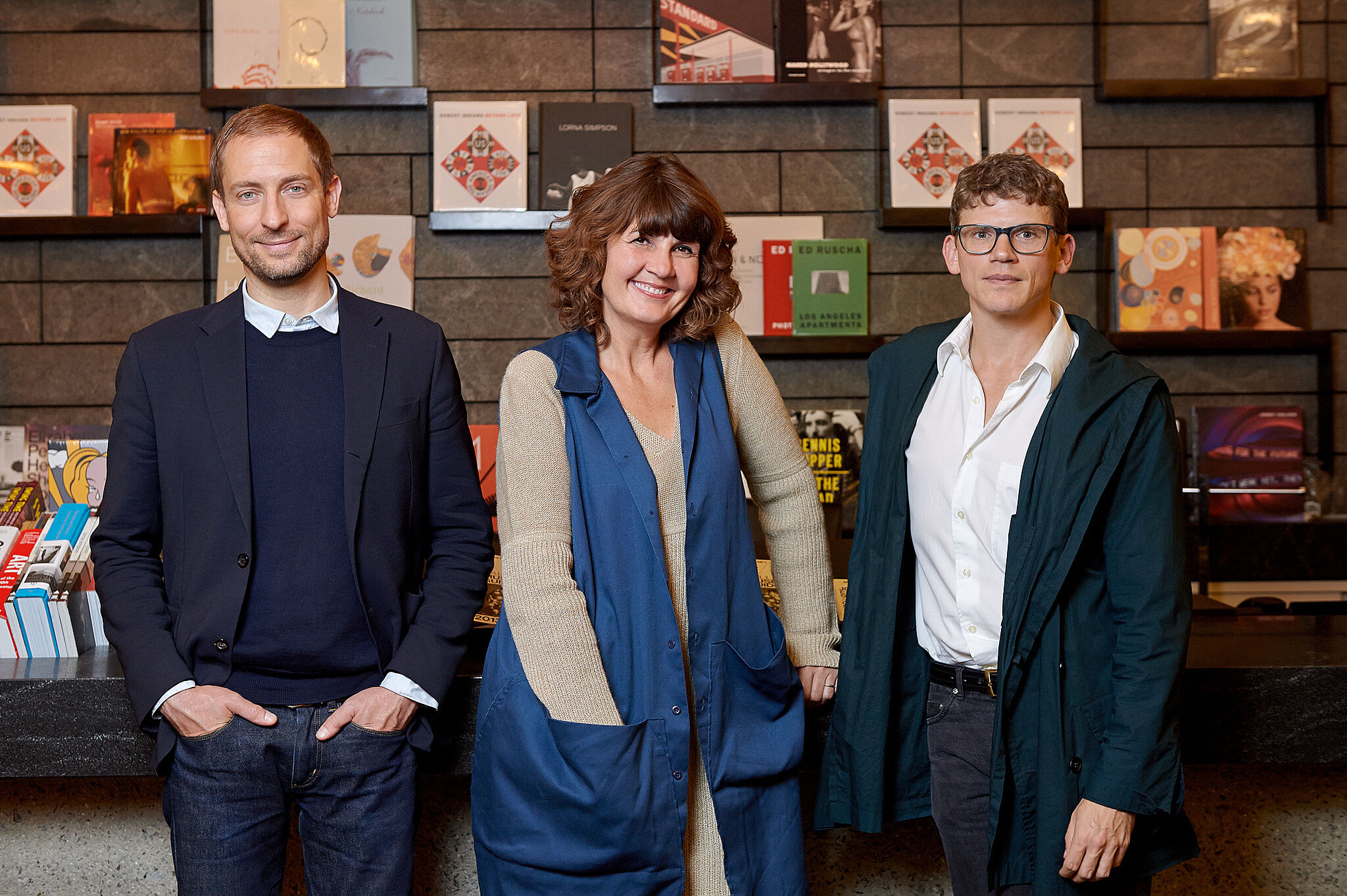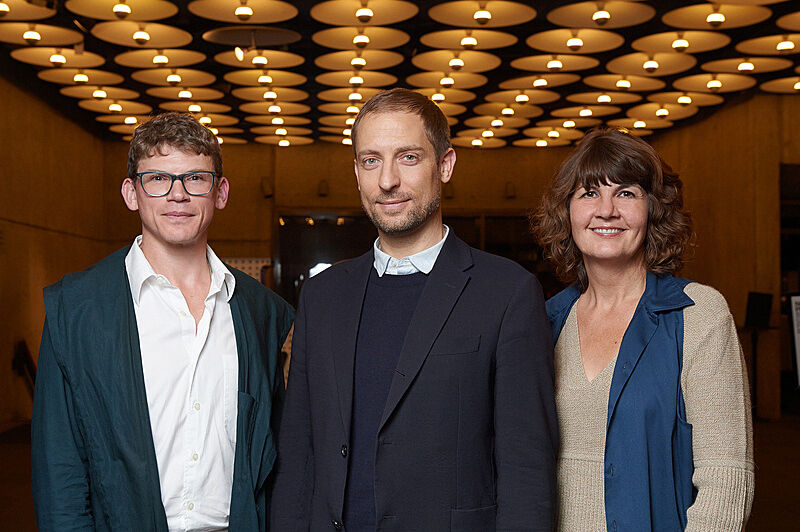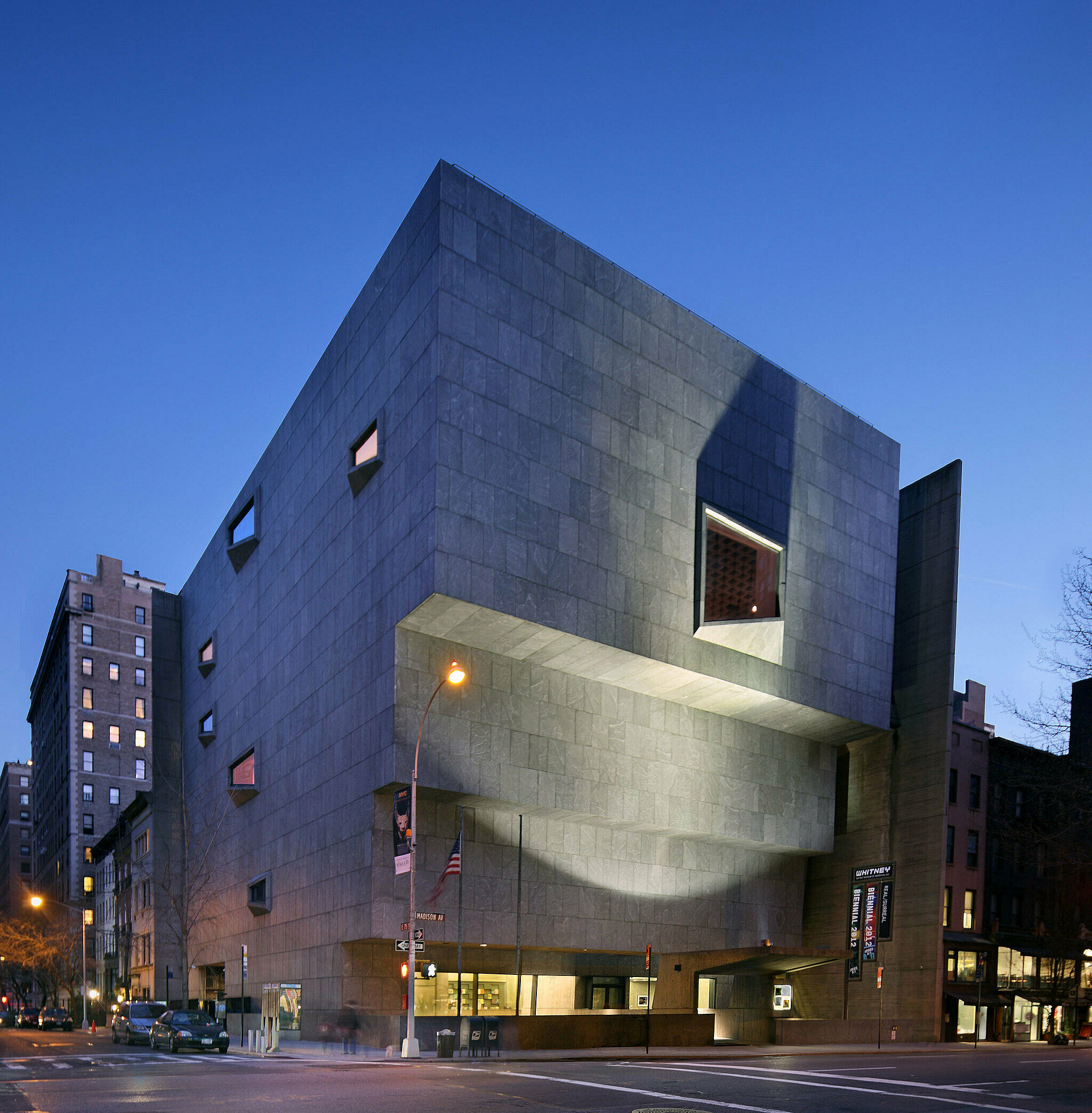Tony Tasset Opens Up the Artist List
May 7, 2014
In the 2014 Biennial catalogue, Tony Tasset referred to inclusion in the Whitney Biennial as a personal “white whale,” an aspiration that he pursued for a quarter-century and achieved in 2014. When his moment arrived, he responded with a populist gesture, engraving the names of hundreds of thousands of other artists on a new public sculpture located in New York City’s Hudson River Park. Since its installation in March, Artists Monument has become an attraction not only for those passing by Chelsea Piers, but also for artists who visit the site to search for their own names and those of friends. For this Whitney Stories interview, Tasset responded to questions about the work, which remains on view through May 25.
The Artists Monument is situated near the Whitney’s new building, which will open in the spring of 2015. Could you tell us about your decision to work with this site?
I had the idea for the Artists Monument for a few years but I really wanted to show the work in New York where there is such a concentration of artists. I had almost given up when Michelle [Grabner] heard about the piece and invited me to participate in the Biennial. I can’t think of a more perfect location or occasion. There is incredible pedestrian traffic along that stretch of the river and it’s close to the Chelsea galleries, the High Line and the new building. Unlike a traditional monument that is supposed to project stoic permanence, the Artists Monument is made on shipping containers. The location at the docks emphasizes the global, fluid new paradigm of a constantly moving art world. The goal was that as the weather warmed up and artists heard about the Monument they might make a pilgrimage to find their name, and indeed they have.
How does this project relate to other public sculptures you’ve made?
Over the last ten years I’ve produced seven public sculptures. They are all different stylistically but they do share a strong populist pull. These sculptures have elicited lots of selfies and Instagram uploads. Populism is a dirty word for art but when I make a public work I want to speak to a wide audience. The Artists Monument is a little more “insider” than the other public works I’ve made. The form is closer to minimalism as opposed to the vernacular forms I’ve riffed on in the past like the giant Eye in Dallas or the 94-foot tall Rainbow in Culver City. The monument is for artists, their families, friends, and followers, but in New York City that’s a lot of people.
The monument pays tribute to nearly 400,000 artists whose names were culled from the Internet. Could you tell us about that process?
There are several databases on the Internet that rank artists according to some unknown criteria. After about fifteen minutes of research I found one of the biggest ones.
Can you describe how the names are organized?
The whole point of the work was to simply change the list from a value ranking to a non-judgmental and enormous list. The names are in alphabetical order. I’m not at all anti-technology, although I am a bit of a Luddite, but one of the downsides of the information age is that it’s so easy to find out precisely your “value” with a click of a button. This is of course not exclusive to artists.
Did anything about the list surprise you?
I got a touching email from an artist who I didn’t know. He thanked me for including him on the list. He was feeling depressed about his struggles as an artist but my piece made him feel like part of a community.
I need to add that the Artists Monument attempts to include all artists but this is a symbolic, utopian gesture. It would be impossible to include everyone who calls him- or herself an artist. It would be a real drag not to be on that monument.
